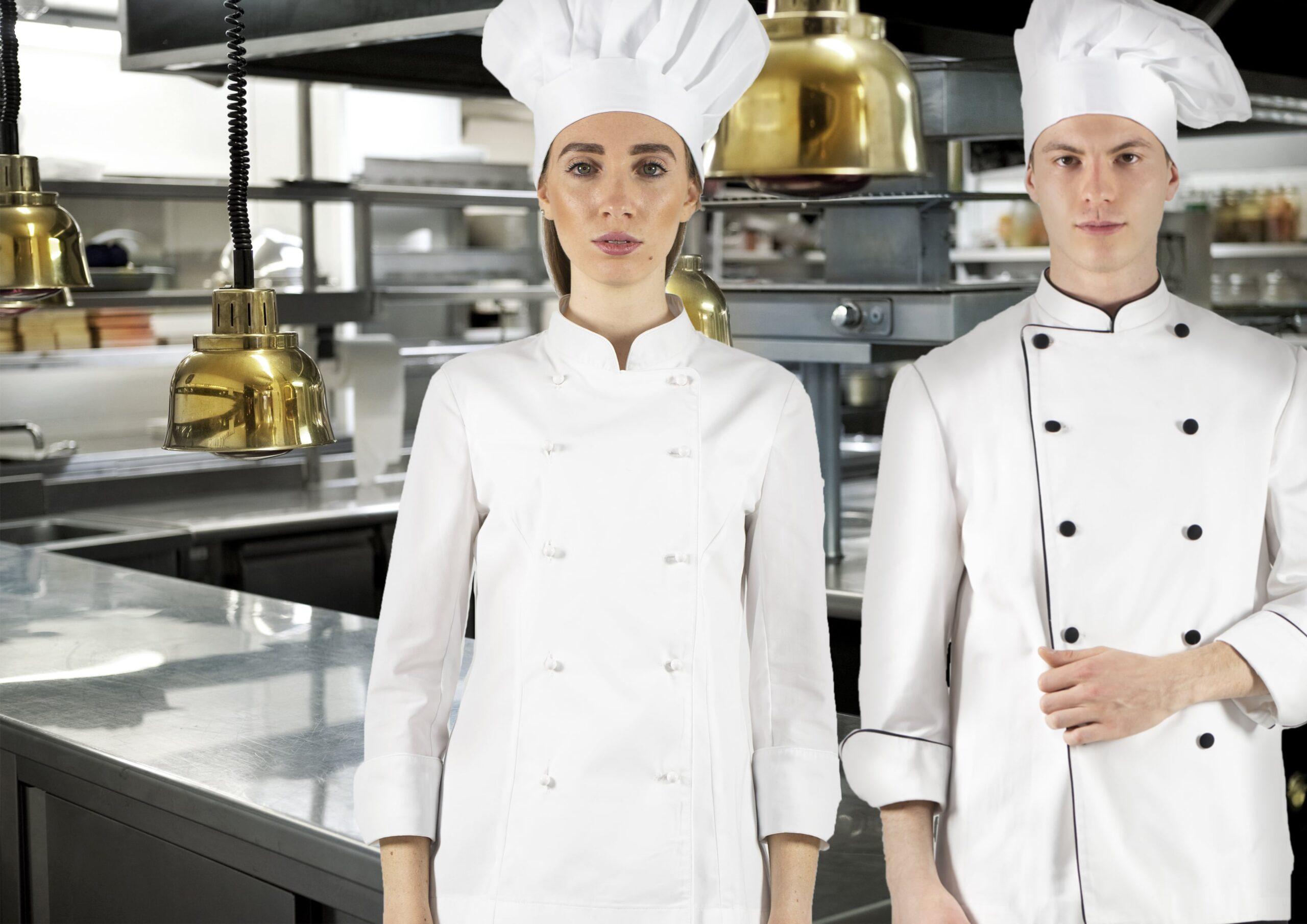
Introduction
The kitchen uniform is not just a simple dress code; it’s a vital component of the culinary world that balances functionality, safety, and professionalism. Whether you’re a seasoned chef, a culinary student, or simply someone who loves to cook at home, understanding the importance of kitchen uniforms is essential. In this comprehensive guide, we’ll explore the significance of kitchen uniforms, their history, components, and the critical role they play in maintaining a safe and efficient kitchen environment.
The Historical Roots of Kitchen Uniforms
The concept of kitchen uniforms has deep historical roots, and its evolution reflects the changing needs and values of the culinary profession. Here’s a brief overview of the history of kitchen uniforms:
Early Beginnings
The origins of kitchen uniforms can be traced back to the medieval kitchens of Europe. Cooks and kitchen staff wore clothing that was functional but far from the standardized uniforms we see today.
The Influence of Marie-Antoine Carême
In the 19th century, the renowned French chef Marie-Antoine Carême played a significant role in standardizing kitchen uniforms. He introduced a uniform that aimed to balance functionality, hygiene, and a distinctive look for culinary professionals.
The Iconic Chef’s Jacket
One of the most recognizable elements of the modern kitchen uniform is the chef’s jacket. Its design serves both functional and aesthetic purposes. The double-breasted jacket provides insulation from heat and protection against spills, while its reversible front allows chefs to hide stains by simply switching sides.
The Traditional White Color
The classic white color of kitchen uniforms symbolizes cleanliness and professionalism. It allows for the easy detection of any food stains, ensuring that chefs maintain a high standard of hygiene in the kitchen.
Additional Components
Kitchen uniforms often include other components such as chef pants, aprons, headwear, and comfortable, slip-resistant shoes, all designed with practicality and functionality in mind.
Components of a Kitchen Uniform
A typical kitchen uniform is carefully designed to serve various purposes, both in terms of functionality and maintaining a professional appearance. Here are the key components of a standard kitchen uniform:
Chef’s Jacket
Double-breasted design: Provides insulation from heat and protection against spills.
Long sleeves: Protect the arms from burns and splatters.
Cloth-covered buttons: Prevent metal from touching hot surfaces.
Chef Pants
Baggy fit: Allows for ease of movement in the kitchen.
Elastic or drawstring waist: Ensures comfort during long shifts.
Dark-colored or checkered patterns: Conceal stains and add a touch of style.
Apron
Waist apron: Protects the lower body from spills and stains.
Bib apron: Offers full coverage for the upper body and lower body.
Headwear
Chef Hat (toque blanche): A tall, pleated hat symbolizing authority and expertise.
Skull cap: A less formal option often worn by line cooks.
Footwear
Slip-resistant and durable shoes are essential for kitchen safety.
Closed-toe and easy-to-clean designs are preferred.
The Significance of Kitchen Uniforms
Kitchen uniforms play a crucial role in the culinary world for several reasons:
Safety
Protection from Heat: The long sleeves and double-breasted jacket provide insulation against hot liquids and surfaces, preventing burns.
Resistance to Spills: The durable fabric of chef pants and the use of aprons shield the body from spills, reducing the risk of accidents.
Hygiene
Easy Detection of Stains: The white color of kitchen uniforms allows for the quick identification of food stains, ensuring that chefs maintain a high level of cleanliness and professionalism in the kitchen.
Functionality
Comfort: Baggy chef pants with an elastic or drawstring waist ensure comfort during long shifts and ease of movement.
Freedom of Movement: Loose-fitting pants and slip-resistant shoes enable chefs to work efficiently and safely in a fast-paced kitchen environment.
Professionalism
Distinctive Appearance: The uniform’s design, especially the chef’s jacket and hat, distinguishes chefs as professionals in their field and conveys a sense of authority.
Tradition: Kitchen uniforms pay homage to the traditions of the culinary world, connecting today’s chefs to a rich history.
Hierarchy and Teamwork
The toque blanche, with its pleats representing a chef’s rank, fosters a sense of hierarchy and respect among kitchen staff.
Uniforms help create a sense of unity and teamwork within the kitchen, where each role is essential for a smoothly functioning culinary operation.
The Evolution of Kitchen Uniforms
While tradition remains a cornerstone of kitchen uniforms, modern culinary professionals have introduced contemporary elements to their attire:
Alternative Colors
Some chefs and restaurants have adopted colored uniforms, such as black or gray, to offer a break from the traditional all-white look.
Personalization
Many chefs now personalize their uniforms with embroidered names or logos, adding a unique touch to their attire.
Modern Fabrics
Advanced fabric technologies have led to the development of kitchen uniforms that are more breathable and stain-resistant, improving comfort and durability.
Inclusivity
Kitchen uniforms are becoming more inclusive, with gender-neutral designs that cater to the diverse workforce in the culinary industry.
Conclusion
Kitchen uniforms are more than just garments; they are a blend of tradition, functionality, and style that contribute to the safety, hygiene, and professionalism of the culinary world. Understanding the significance of kitchen uniforms, their history, and their components allows chefs, culinary students, and cooking enthusiasts to appreciate that these uniforms are not just attire, but an essential part of the culinary experience. So, the next time you enjoy a delicious meal at a restaurant or whip up a gourmet masterpiece in your own kitchen, take a moment to recognize the importance of the uniformed professionals who make it all possible.


